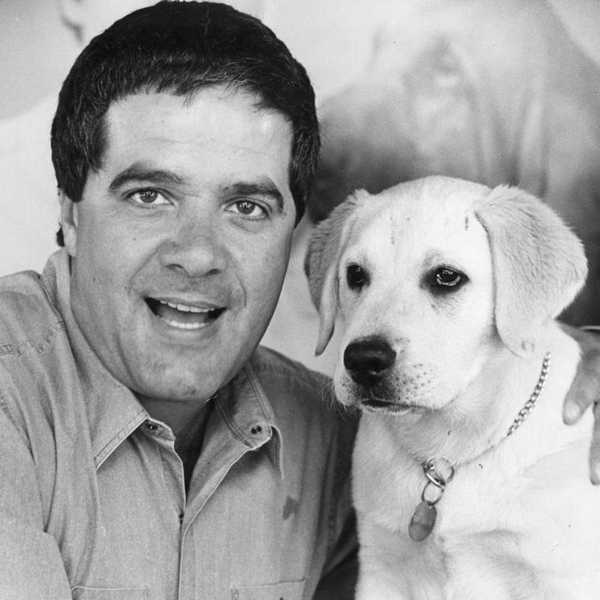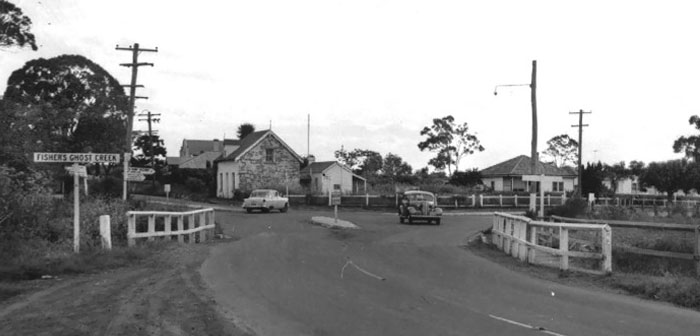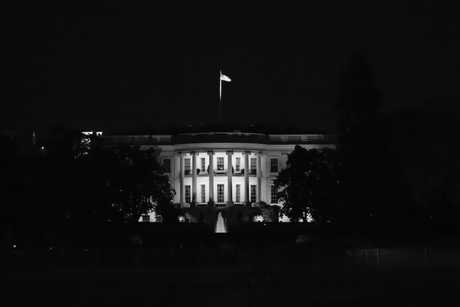Simon Townsend: Pioneer of Australian Children's Television
A tribute to Simon Townsend, creator of Wonder World, celebrating his contributions to Australian...

 Search...
Search...
Everybody loves a good ghost story.
Even those of us afraid of the paranormal don't mind them, as long as we're in good company. So then, what could possibly influence people to gravitate to, of all things, ghost stories? Let's begin by making a very important distinction.
Hans Holzer (26 January 1920 - 26 April 2009), renowned parapsychologist and author, perhaps most famous for his investigation of the Amityville hauntings and the ensuing books, fiction and non-fiction, outlined a key difference between ghosts and spirits.
Ghosts are bound to the place they died, suddenly, violently, tragically, driven by a sense of unfinished business and unable to move on, often replaying the event over and over. Spirits on the other hand are souls that passed away peacefully and are free to roam between this world and the afterlife, coming and going as they please, choosing to stay for prolonged periods of time or visiting frequently if they're unable to let go of their loved ones.

Therein lies the caveat. People use the words ghost and spirit interchangeably, but they are, according to Holzer, on opposite ends of the spectrum.
Ghosts are associated with malevolence, violence, vengeance, deeds that make spines tingle and raise hairs on the back of necks; whereas spirits are associated with benevolence, comforting the grief stricken, those in mourning, anointed guardian angels that will be ready to move on to a better place once they're certain their loved ones will move on with their lives without them.
The psychology behind paranormal phenomena is multi-layered and deeply fascinating, and now that the basic difference between ghosts and spirits has been covered, we can better understand why spirits are not only a source of guidance and comfort, but of mental wellbeing, be it through religious beliefs, cultural resonance, or a combination of variables, for many people in this world. We all handle loss and grieve as differently, or as similarly, as the manner in which we view the prism of life, or in this case, the afterlife.
What about ghosts? We began by asking why people would gravitate towards ghost stories, and the answer lies in the caveat. The word 'Caveat', according to the Oxford dictionary is Latin in origin and literally means: 'Let a person beware'. It's a formal warning reserved for instances where a person is set to enter imminent danger; be it physical, psychological or sensory, such as thrill rides, a horror film or, as you may have guessed, haunted places.
In short, the type of person who loves roller coasters, skydiving, bungee jumping, etc., is the same type of person who would seek out a spooky film or a scary book as casually as they would visit a haunted house or book a night tour of Alcatraz: The thrill seeker.
Some people are just better equipped at handling stress than others; while the feeling of overwhelming fear and the sudden relief of safety delivered by a good story, on the screen, on the page or interactively, is a positive experience for some, it's the equal opposite for others. One person's adrenalin rush is another person's trauma.
You may be familiar with some, if not all, of the diverse local and international tales of the paranormal that follow. They are presented in the good old fashioned spirit of sharing ghost stories around a campfire, and if you decide to keep reading, rest assured the only caveat is that you are in good company.
A TALE OF TWO FREDS
19th Century Australia wasn't kind to these two gentlemen; Frederick Fisher and Frederick Federici, a farmer and an Opera singer respectively. They were polar opposites in life, but in death, they share the distinct honour of being the subjects of enduring Aussie folk lore.

FISHER'S GHOST: Campbelltown, New South Wales, is the setting for the tale of an Aussie farmer, Frederick Fisher, born 28 August 1792 in London, England, who disappeared on 17 June 1826. A neighbouring farmer named George Worrall claimed the vacant farm on the basis of a letter he alleged to have received from Mr Fisher stating that he would not be returning to Australia and was therefore handing ownership of his farm over to Mr Worrall. Several months later, a well-respected local named John Farley claimed to have seen a ghost pointing to a paddock beyond a nearby creek. He claimed the ghost was Fred Fisher, who did not utter a single word, but simply pointed to the paddock before disappearing. Mr Fisher's initial disappearance was unexpected and raised questions of his whereabouts, which in turn prompted a police search, and sure enough, his remains were discovered in the paddock beyond the creek the alleged ghost had pointed to. Police records don't acknowledge John Farley's ghost story, but the creek where Mr Fisher's body was recovered is still referred to as Fisher's Ghost Creek. Furthermore, Fisher's Ghost was the inspiration for a 1924 silent film of the same name depicting the events surrounding Mr Fisher's murder, and the story of his demise is still commemorated by locals. The Festival of Fisher's Ghost is a 10 day annual event that dates back to 1956 and is run by the Campbelltown City Council to promote unity through a variety of creative activities such as firework displays, carnivals, exhibitions, live music, street fairs and fun runs.
FEDERICI'S FAUST: Faustian legend, making a pact with the devil at a crossroad, has been depicted in many forms throughout history, perhaps most famously in the western world by Oscar Wilde's 'The Picture of Dorian Gray'. British Opera singer Frederick Federici, born 22 April 1850 in Florence, Italy, began his career at the age of 21. He would go on to tour Britain and America with the widely acclaimed Gilbert and Sullivan company before arriving in Australia in July of 1887, with his wife and two children. On 3 March 1888, Frederick Federici gave his sole performance as 'Mephistopheles' in Faust at Melbourne's Princess Theatre. Inexplicably, he managed to perform the opera in its entirety, but at its climax, as his character was dramatically lowered into the fiery depths of hell via a trap door that led to the basement, Mr Federici suffered a fatal heart attack. He was 37 years old. It was opening night. He was buried on 5 March 1888 at the Melbourne General Cemetery. His wife and two children returned to England later that year. People who were present that night claim Mr Federici was on stage when the cast bowed to the crowd, and Princess Theatre staff have since made claims of witnessing ghostly apparitions. The Federici Bistro in Melbourne was named in his honour.
1600 PENNSYLVANIA AVENUE
The most famous address in the United States of America is said to be haunted. The White House is the home of white noise and presidential apparitions, according to multiple former presidents, first ladies, staff and distinguished visitors.
ABIGAIL ADAMS: Washington D.C. was not always the U.S. capital, for a short time, the capital was in Philadelphia. The second President of the United States, John Adams (1797 - 1801) was the first to reside in the newly minted White House in the nation's new capital in Washington D.C. However, it's the First Lady, Abigail Adams, who has since become the ghostly attraction. When the Presidential couple first moved in, Washington D.C was a newly built town on swampy land. Mrs Adams chose to dry her washing in the East Room, the warmest in the property, and her spirit has been spotted by visitors and staff alike heading towards said room wearing her cap and lace shawl, arms in laundry-carrying position.
DAVID BURNS: "I'm Mr Burns". The Franklin Roosevelt and Harry Truman administrations both reported similar instances of staff members hearing that phrase. According to 30 year White House staff member Lillian Rogers Parks' 1961 memoir, a valet heard the voice in the Yellow Oval Room during the Roosevelt era, and a guard heard the same voice and thought it was James Byrnes, Secretary of State at the time, who was not present at the White House on that particular day, during the Truman era. Who is Mr Burns? He's the gentleman who sold the U.S. government the majority of the land upon which Washington was built.

ANDREW JACKSON: The seventh President of the United States (1829 - 1837) has made multiple appearances throughout the years. Two famous accounts are that of former First Lady, Mary Todd Lincoln, who stated she heard the ghost of Mr Jackson stomping and cursing throughout the White House. Mr Jackson lost a tightly contested presidential race to John Adams in years prior. He was said to have held a grudge against his detractors well beyond his own presidency, which may account for Mrs Lincoln's claims. President Harry Truman, the 33rd President of the United States, had a far tamer experience, expressed in a letter to his wife describing creaky floors and wavy drapes in his spooky new residence; "… I can just imagine old Andy (Jackson) and Teddy (Roosevelt) having an argument over Franklin (Roosevelt)".
HONEST ABE: Abraham Lincoln, the 16th President of the United States, inaugurated in March 1861, assassinated in April 1865, is by far the most frequent sighting of the many famous ghosts that allegedly roam the White House. Two famous accounts came from former First Ladies; Grace Coolidge and Lady Bird Johnson, spouses to former Presidents Calvin Coolidge (1923 - 1929) and Lyndon Johnson (1963 - 1969) respectively. However, the two most famous accounts came courtesy of distinguished guests. Queen Whilhemina of the Netherlands fainted after allegedly opening her bedroom door in response to hearing footsteps and a knock, courtesy of none other than the spirit of Abraham Lincoln himself, top hat and all. The other came from former British Prime Minister, Winston Churchill, who after retiring to a hot bath, scotch and cigar for the evening, was met in the adjoining room by, again, President Lincoln, leaning on the mantle by the fireplace. Unfortunately for Mr Churchill, he was underdressed for a Presidential encounter and had little choice but to quip, "Good evening, Mr President. You seem to have me at a disadvantage". According to Mr Churchill, President Lincoln seemed amused before disappearing. Well played, sir. President Lincoln's wife, Mary Todd Lincoln, was deeply entrenched in the occult. She held séances in the Red Room of the White House, largely on account of losing three of her four children at early ages, however, no reports exist of her ever holding a séance for her late husband.
IN THE PRESENCE OF ROYALTY
Edgar Allen Poe's The Raven, William Shakespeare's Hamlet, Charles Dickens' A Christmas Carol, classics in every sense, are rightfully celebrated for the brilliant manner in which they injected the ghost story into public consciousness. However, nothing can surpass a ghost story based on real events, especially when the ghost in question is a blue blood.
Arguably the most famous ghost story, at least in the English speaking world, is that of former Queen of England, Anne Boleyn. She was ruthlessly executed by beheading under false charges on orders by her Husband, King Henry VII, on 19 May 1536. The charges included incest, witchcraft, adultery and high treason. The real reason for her execution was that she could not bear a male heir for the King. Sadly, her only male child was stillborn, and it was at this point in their relationship that the King decided her fate.

After the marriage was annulled in a court of law, she was taken to London Tower for execution. Knelt and blindfolded, she was beheaded and buried in an unmarked grave. On the scaffolds of London Tower, Anne Boleyn delivered her final words:
"I am come hither to accuse no man, nor to speak anything of that, whereof I am accused and condemned to die, but I pray God save the king and send him long to reign over you, for a gentler nor a more merciful prince was there never; and to me he was ever a good, a gentle, sovereign lord, I take my leave of the world and of you all, and I heartily desire you all to pray for me. O Lord have mercy on me, to God I commend my soul".
Unfortunately, the story of Anne Boleyn's ghost is a sad continuation of her final moments on earth. Sightings of her ghost, with her head tucked under her arm, are numerous. Besides the place of her execution, the London Tower, other places she has been spotted include Salle Church, Marwell Hall, Hever Castle, Windsor Castle and Blickling Hall, where once stood a medieval manor that is believed to have been her birthplace.
HISTORICAL CONTEXT COUNTS
Lastly, we would be remiss if we failed to mention why people choose to set foot in famous places allegedly haunted by ghosts, such as cemeteries, prisons, castles, mansions, houses, etc. Something important happened in these places. Something scary, but important. These places, like the ghosts that dwell therein, are a part of history, be it in your own home town or on the other side of the world. They draw you into a potentially great bonding exercise that may prove to be very rewarding should you choose to partake. There is a reason why visits to these places are highly sought after, by locals and tourists alike. Yes, they are scary, but they can also be fun. There is, however, one last caveat: Share the experience with family and friends if you wish to be in good company.
By Mario Rodriguez
Sources: